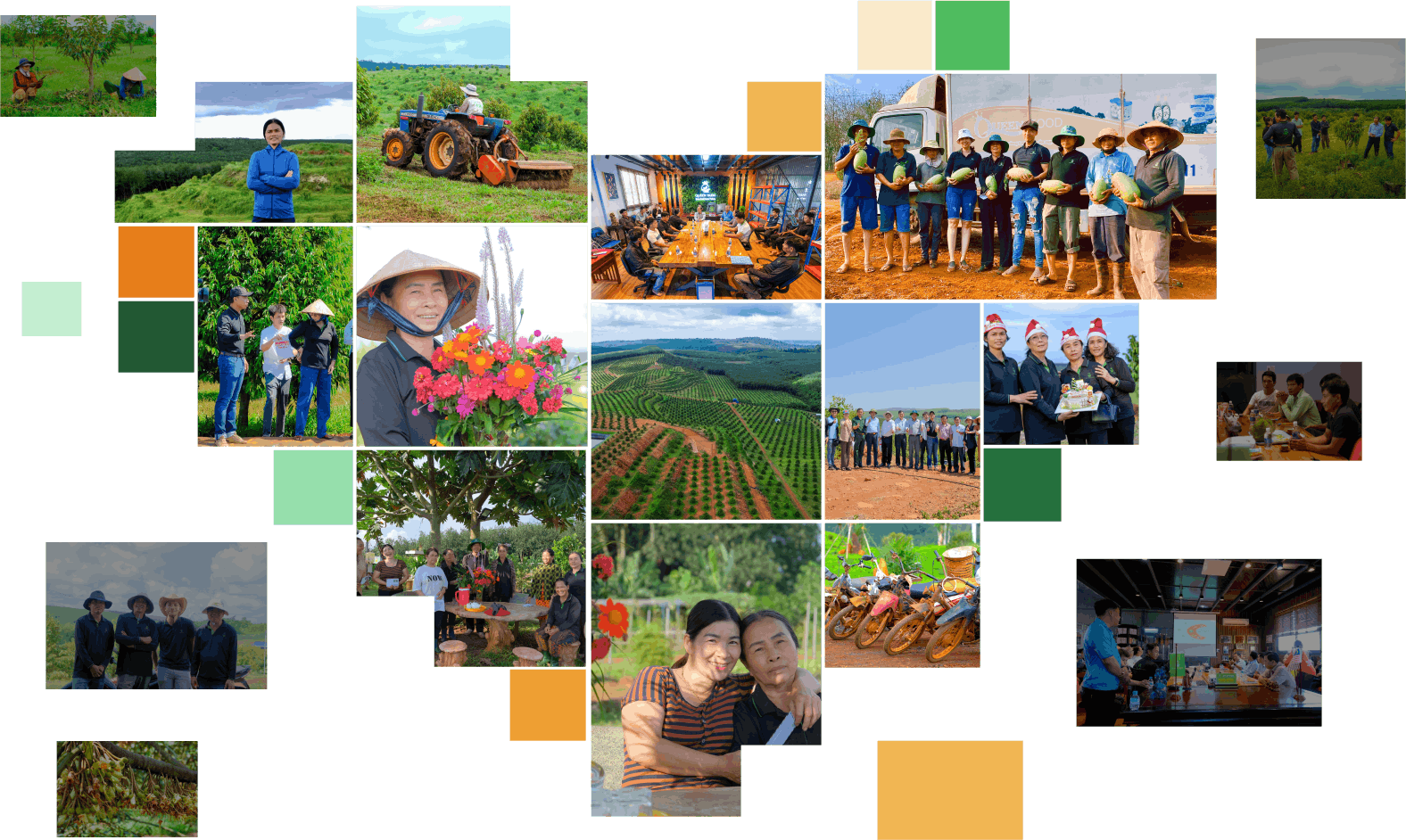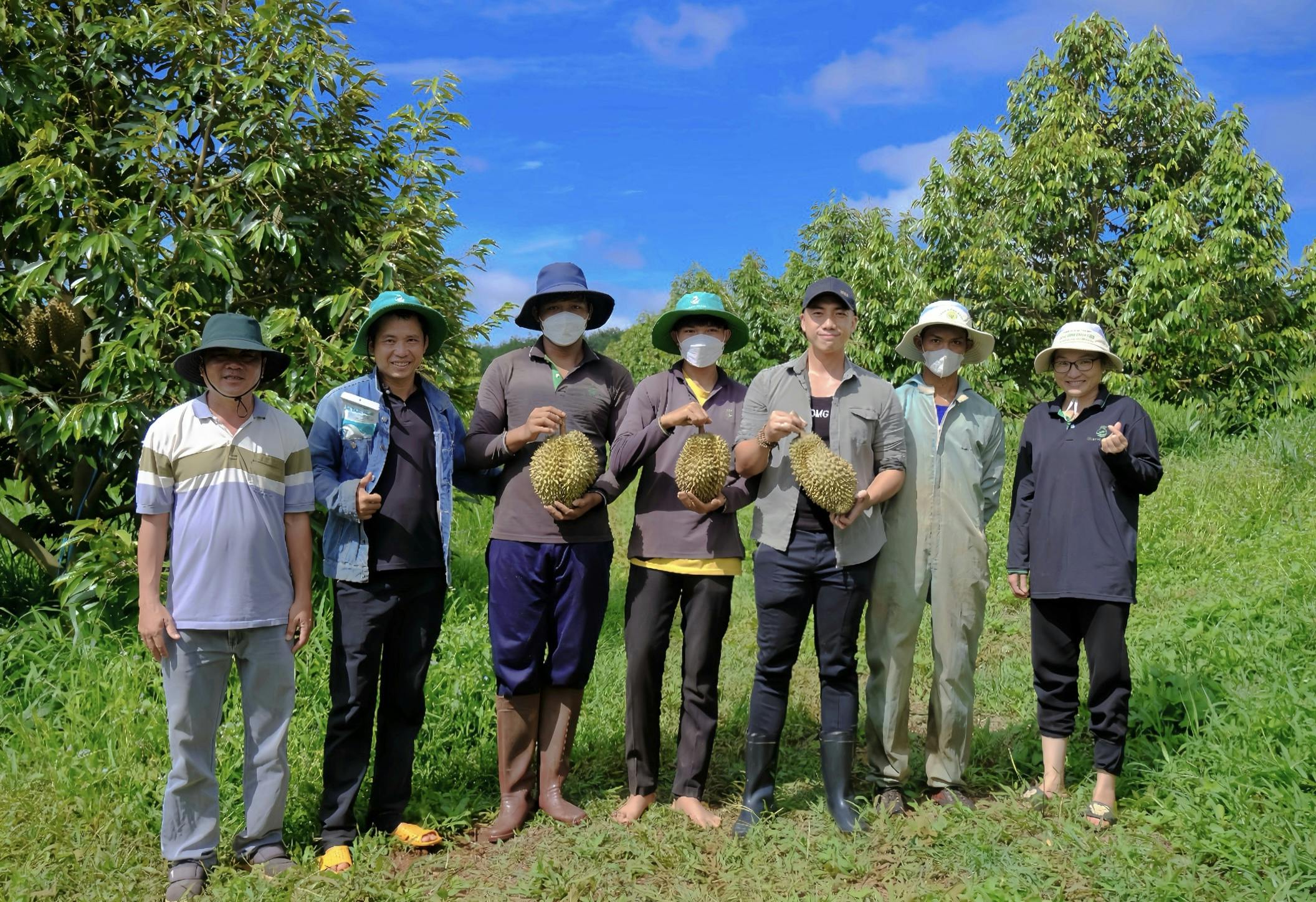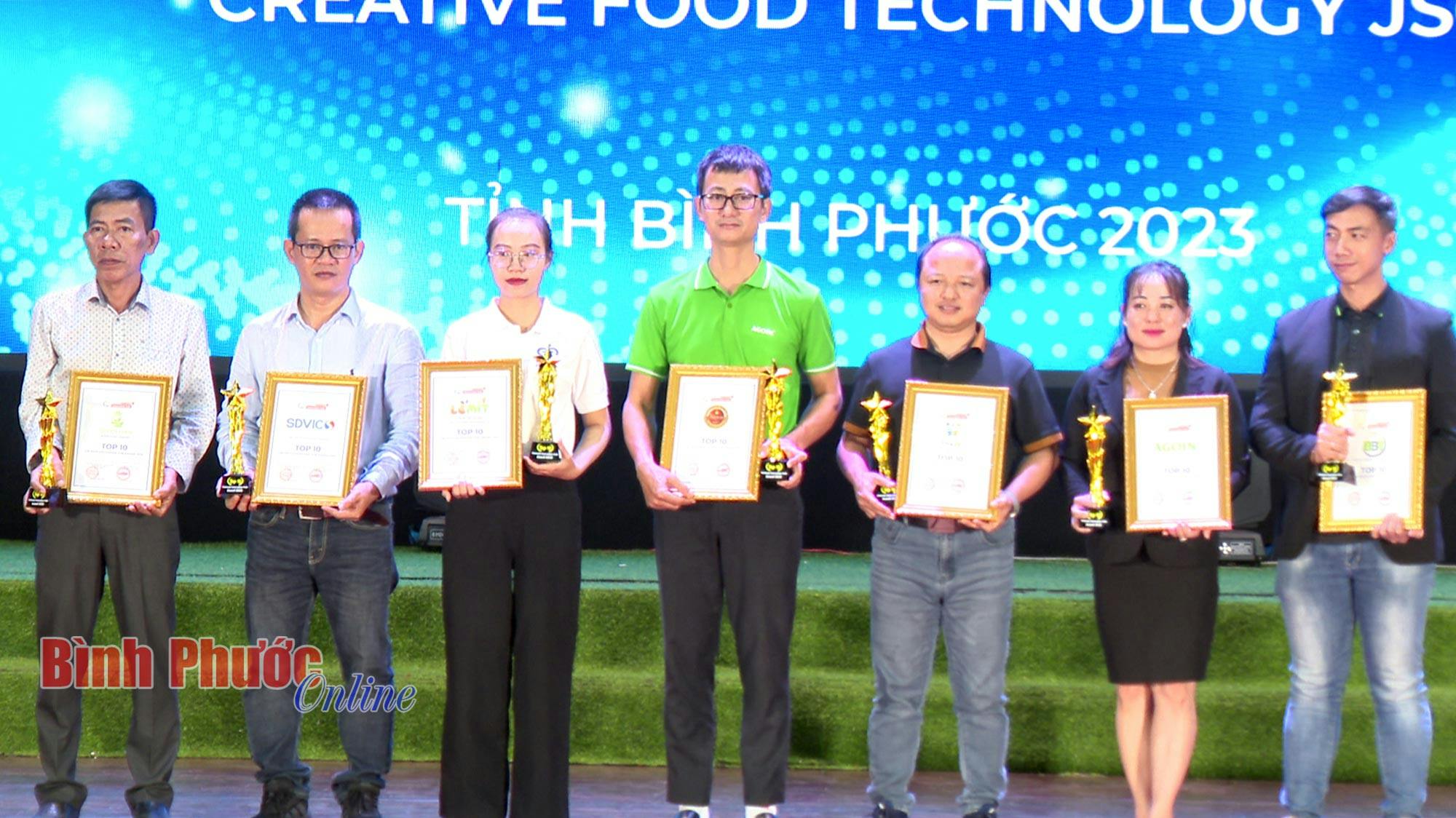
Greening production
Green production is becoming a mandatory requirement for enterprises in the context of global competition. It is not only a requirement of the international market but also the responsibility of enterprises in building the image of the country and preserving a clean environment for future generations. And green growth is not only the story of enterprises but the responsibility of everyone.
Story at Queen Farm
Queen Farm has an area of 55 hectares in Dang Ha commune, Bu Dang district. The farm carries the dream of the young owner Nguyen The Tung (born in 1983) about the modern agricultural economic method, in which all stages of production follow nature. Human impact is carried out to a certain extent and in a positive direction.
From the beginning, Mr. Nguyen The Tung determined the goal of exporting products to foreign markets, so he focused on investing systematically in the garden, from planning the planting area, planning from the general to the details, measuring nutrients in the soil, treating and improving soil and water, selecting standard seedlings, applying farming science, management science and technology... Up to now, 4 areas with 30 durian planting lots including 12,000 trees of Dona, Musangking, Ri6 varieties are in the fourth year of very even development, with straight rows of trees, thick green leaves and identification codes for each tree.
Mr. Nguyen The Tung's sustainable agricultural thinking is also clearly demonstrated in his proactive digging of two artificial reservoirs to store osmotic water during the rainy season and take advantage of water sources from streams. Along with the installation of a smart irrigation system using Israeli technology, this water source ensures enough irrigation for the farm during the dry months without having to take water from underground sources.
Compulsory conversion
Choosing green production from the beginning like Queen Farm is a breakthrough, because in reality, enterprises and production households "still have hesitations" as Mr. Tran Quoc Duy commented. One of the reasons is the fear of changing traditional production habits, relying on natural resources of the subjects (brown economy). This production method has been maintained for a long time, aiming to achieve rapid economic growth, leading to serious consequences: land degradation due to the abuse of chemical fertilizers, pesticides, environmental pollution, resource depletion, climate change ... threatening the sustainable growth of the country. As one of the most vulnerable countries to climate change in the world, according to the World Bank, Vietnam suffers direct damage to public and private assets of about 2.4 billion USD annually, equivalent to 0.8% of GDP due to extreme climate events. This requires Vietnam, each locality, and each manufacturing sector to make changes to minimize risks and meet the demands of the international community for cleaner production.
At the 26th Conference of the Parties to the United Nations Framework Convention on Climate Change (COP26) in 2021, Prime Minister Pham Minh Chinh pledged that Vietnam would bring net emissions to zero by 2050, while supporting important statements and initiatives on forest protection, transition to renewable energy, supporting adaptation for local communities, and reducing methane.
Economist Huynh Thi My Nuong, General Director of Sustainable Development Services and Leadership Training Company Limited (SDLT), said: Once the Prime Minister has made a commitment, businesses must adapt and follow suit. Not to mention the CBAM carbon border adjustment mechanism - a policy under the European Green Deal - which requires businesses exporting from Vietnam with related products in CBAM regulations to adapt. In addition, there are many factors and conditions for exporting to other markets. If businesses do not change, they will automatically increase costs and reduce revenue, which means they will eliminate themselves from the market.
CBAM is the EU's new growth strategy to build a fair and prosperous society, promoting the development of industries on the basis of a clean and sustainable economy. CBAM is expected to help the EU reduce carbon emissions by at least 55% by 2030 compared to 1990 levels. From October 1, 2023, CBAM will pilot the transition period and is expected to be fully operational from 2034.
Action for the future
The National Strategy on Green Growth for the 2021-2030 period, with a vision to 2050, has set out many goals for reducing greenhouse gas emissions, greening economic sectors, greening lifestyles and promoting sustainable consumption... Specifically, these tasks in Binh Phuoc province, on February 2, 2024, the Provincial People's Committee issued the Action Plan on Green Growth in the province, period 2024-2030. One of the priority goals is to gradually limit economic sectors that generate large amounts of waste, cause pollution and environmental degradation, and create conditions for the development of new green manufacturing industries. Applying green technology to production to save resources, reduce emissions, improve the ecological environment...
According to Mr. Vu Ngoc Long, Provincial Party Committee member, Director of the Department of Industry and Trade, the province's commitment to green growth is very suitable for the trend. Industry is also a strength in attracting investment in Binh Phuoc because we have land funds, regional transportation connections, and are located in the key economic zone of the South. "In addition to attracting labor-intensive industries, Binh Phuoc will prioritize attracting high-tech industries and renewable energy to develop in a green direction, which is an advantage to have products with green certificates for export" - Mr. Vu Ngoc Long emphasized.
The action of converting to a green growth model does not only come from green production but also from green consumption, meaning that it requires action from the business community, farmers and everyone towards the goal of sustainable development. It is an action not only for the present but also for the future, contributing to limiting the negative impacts of climate change and for the sustainable development of the country. With each small change, we will all create a big change in the future.







